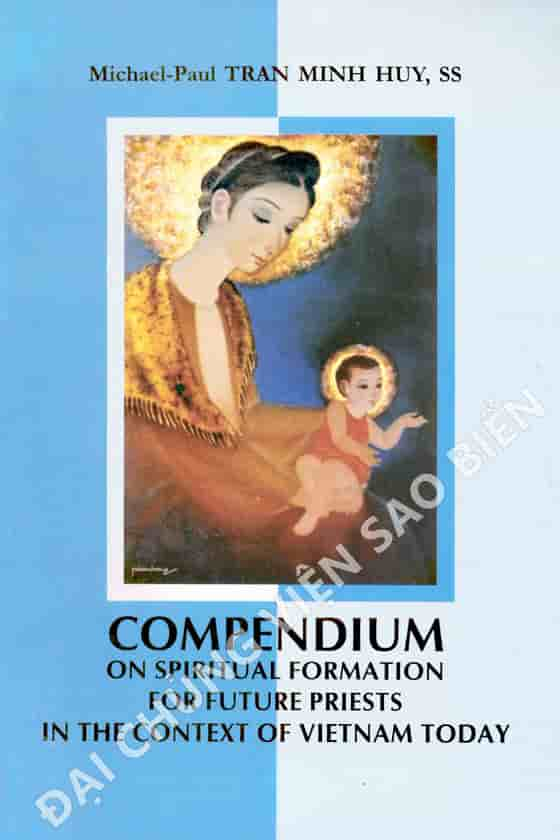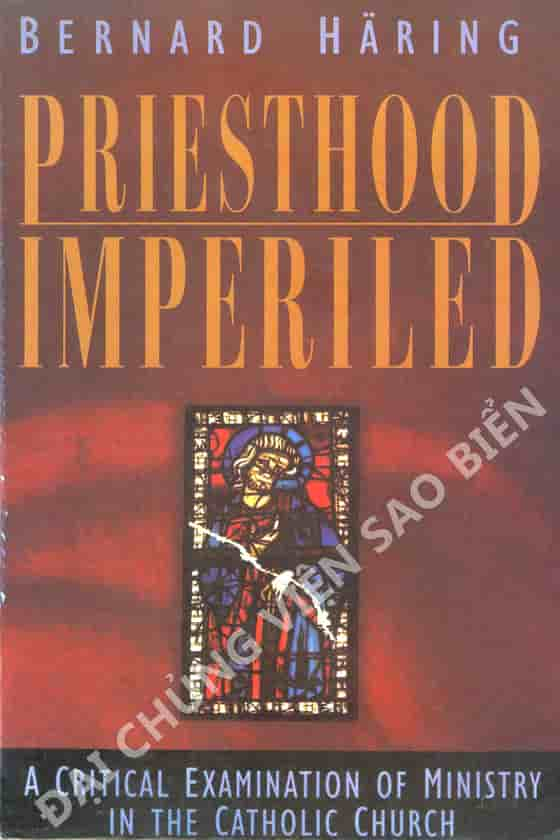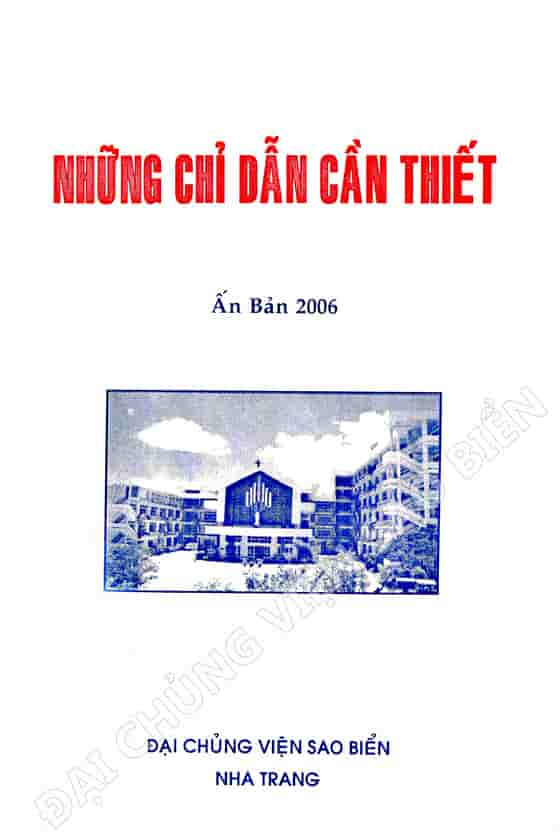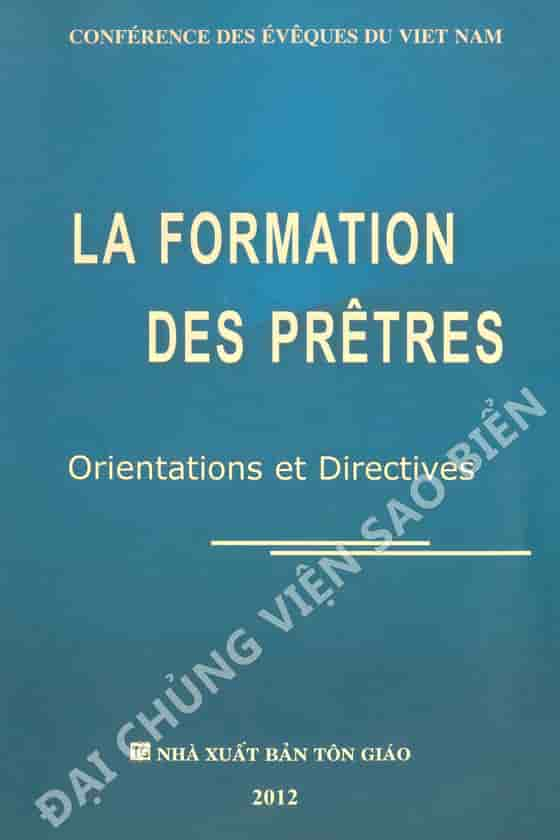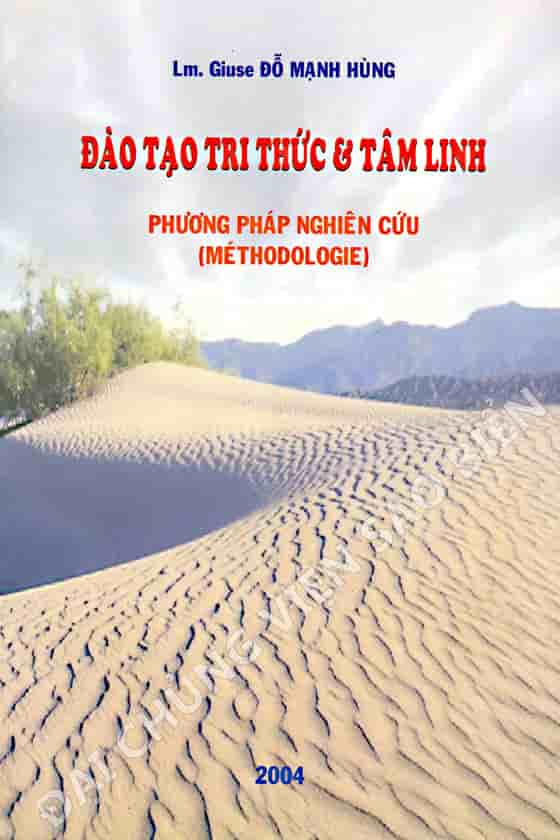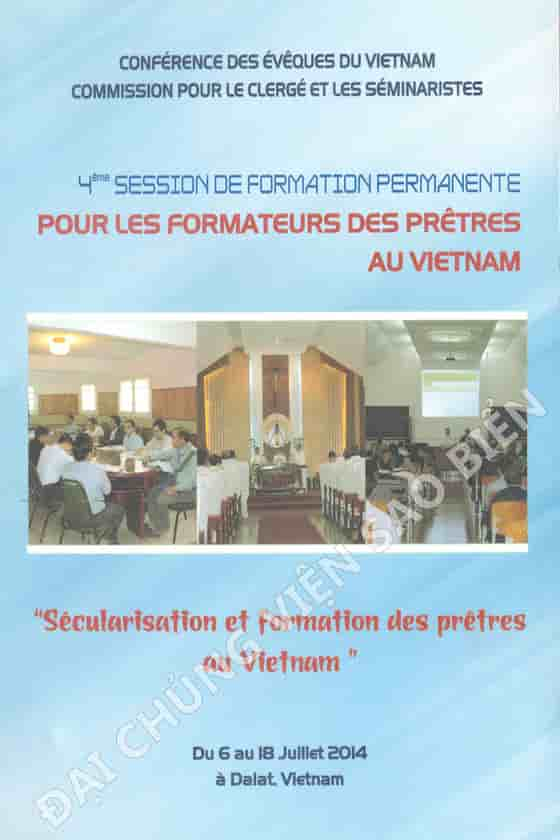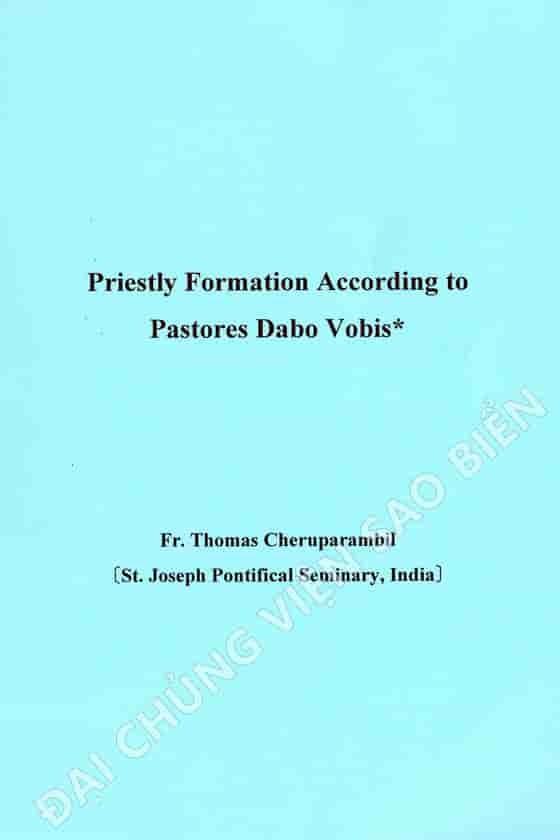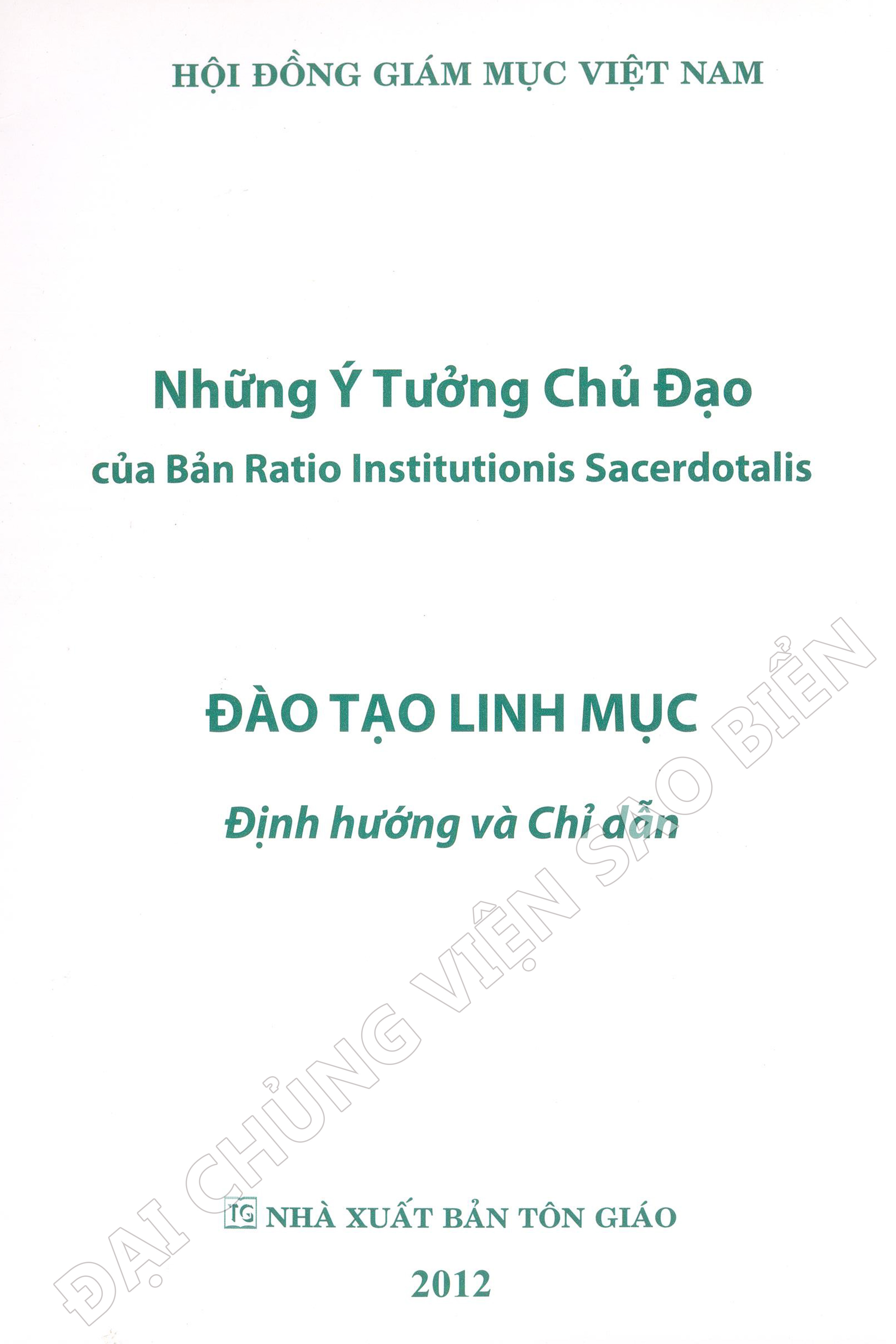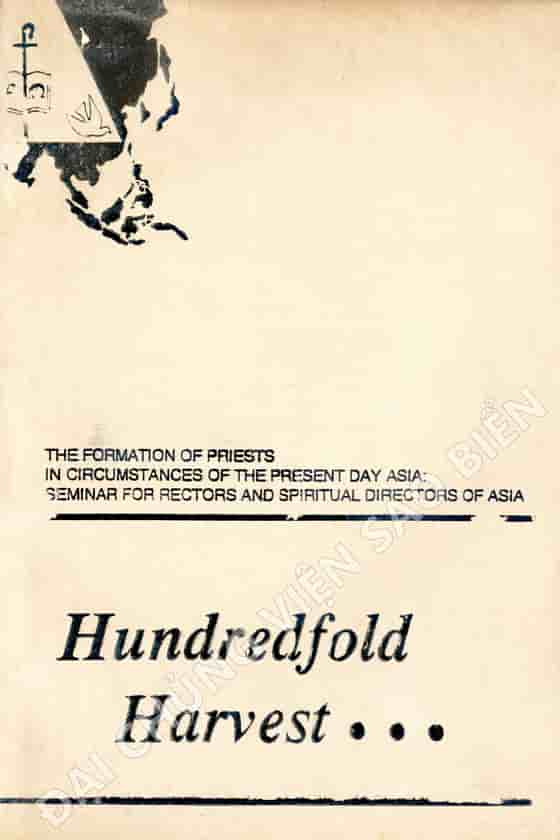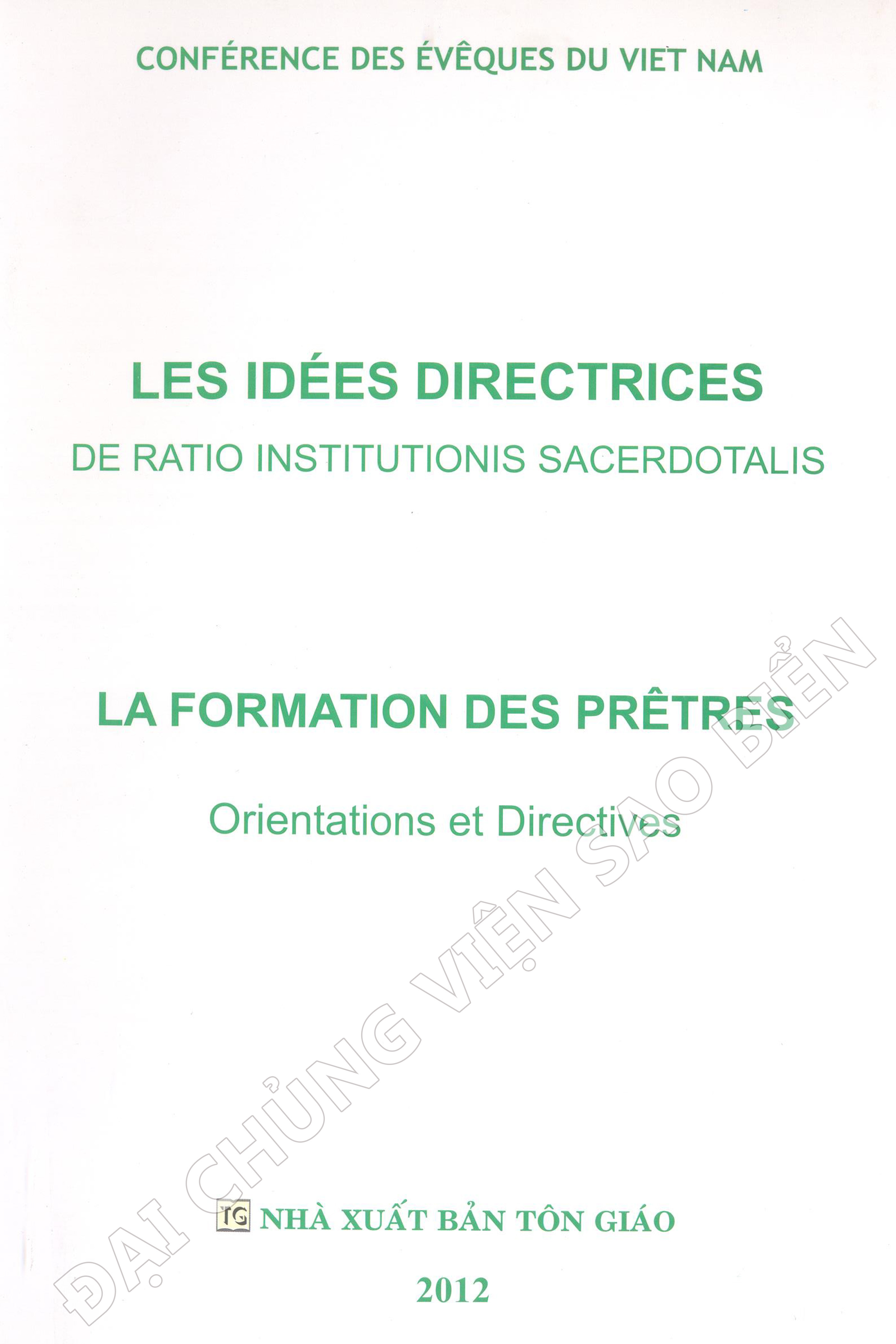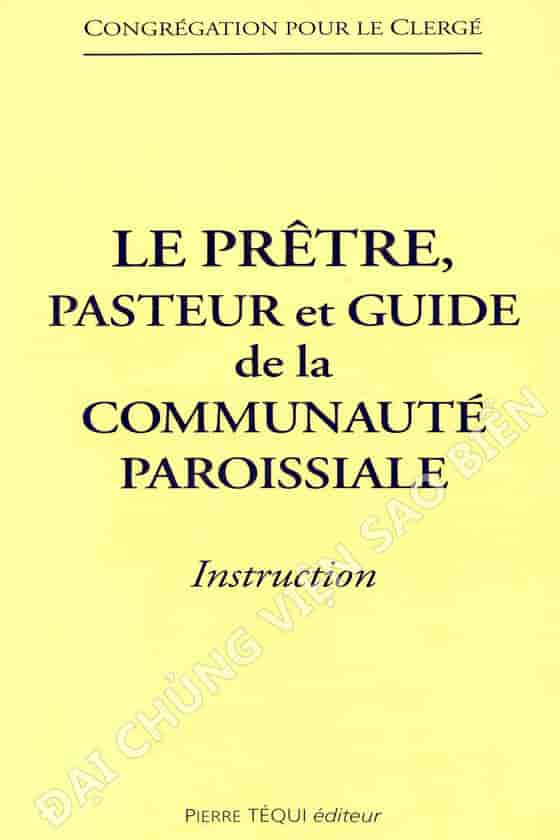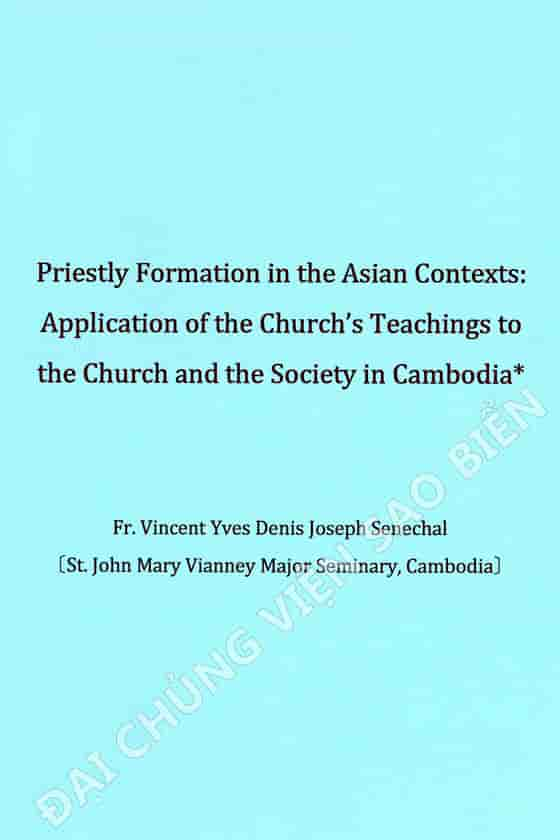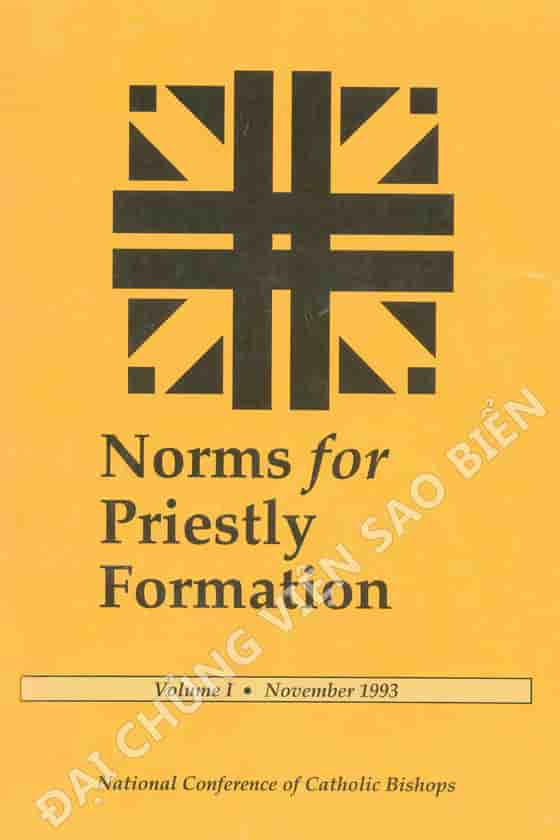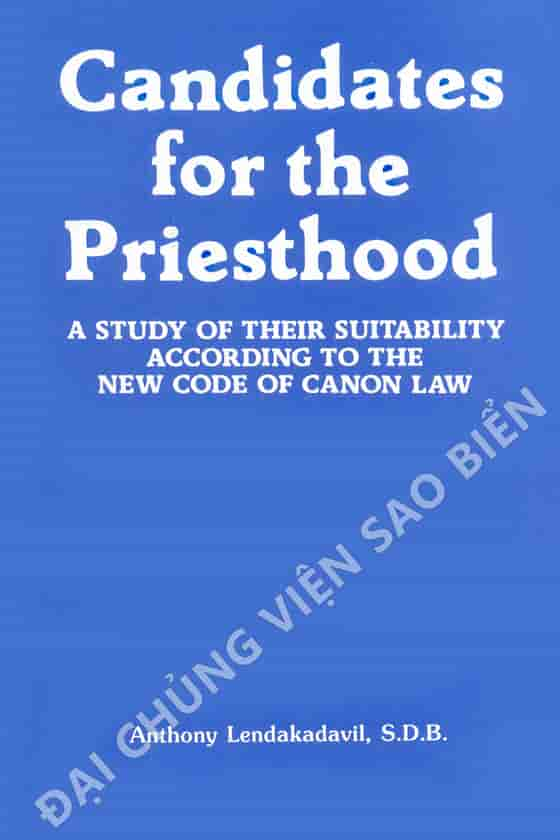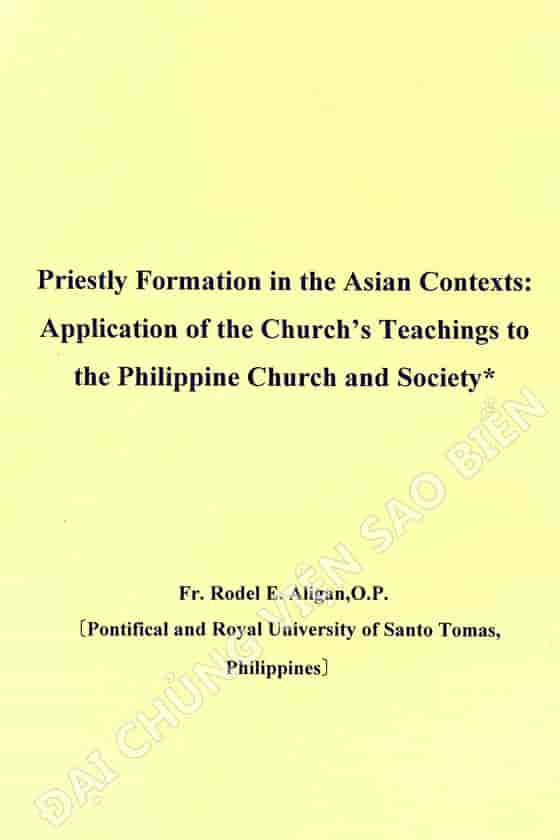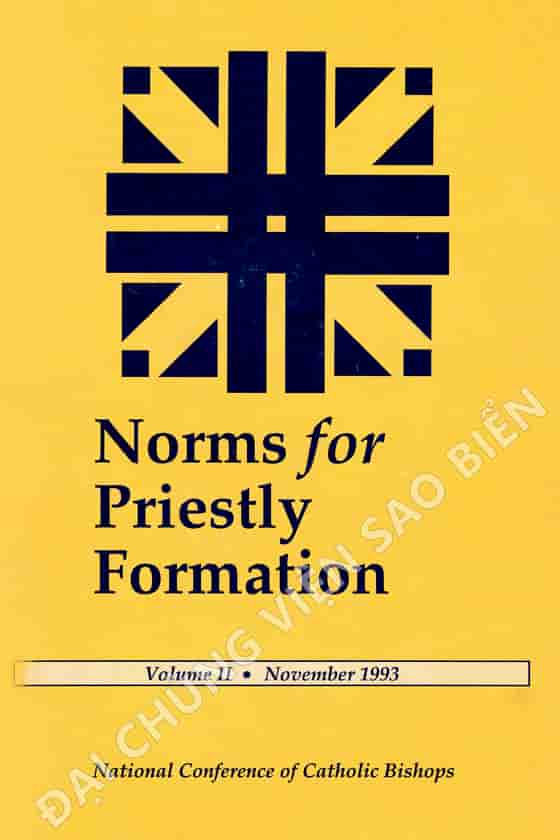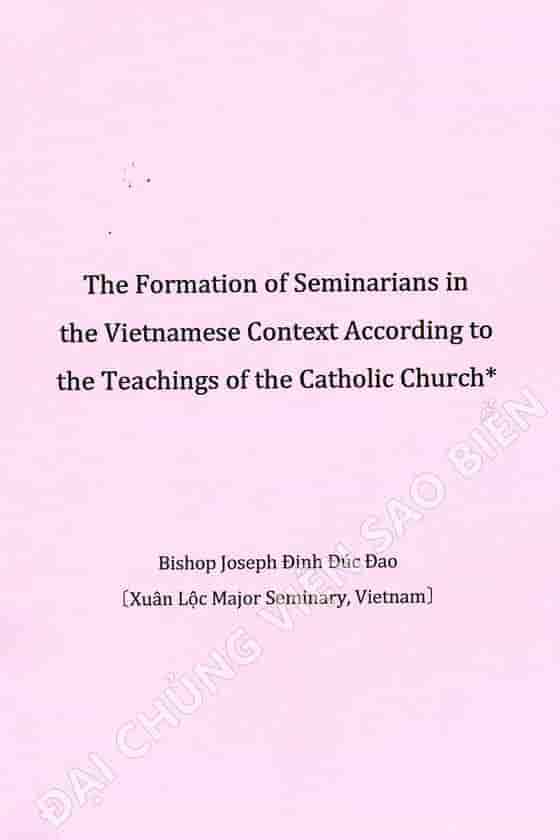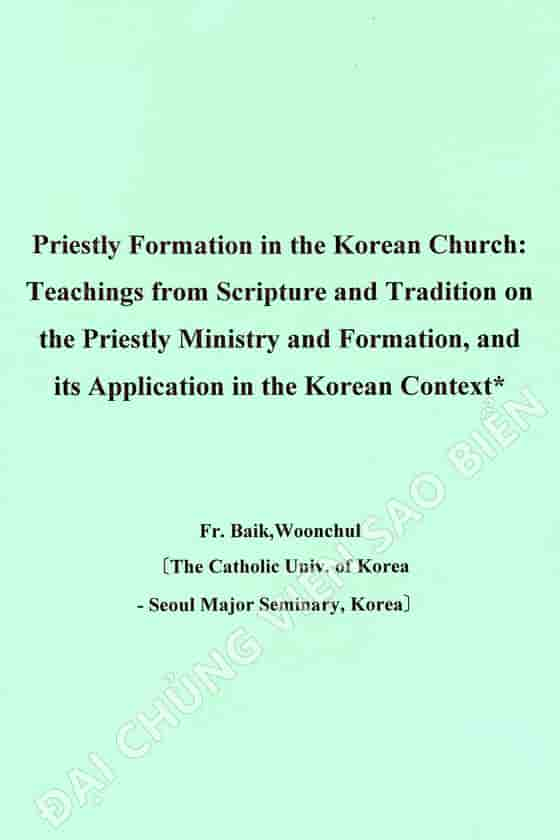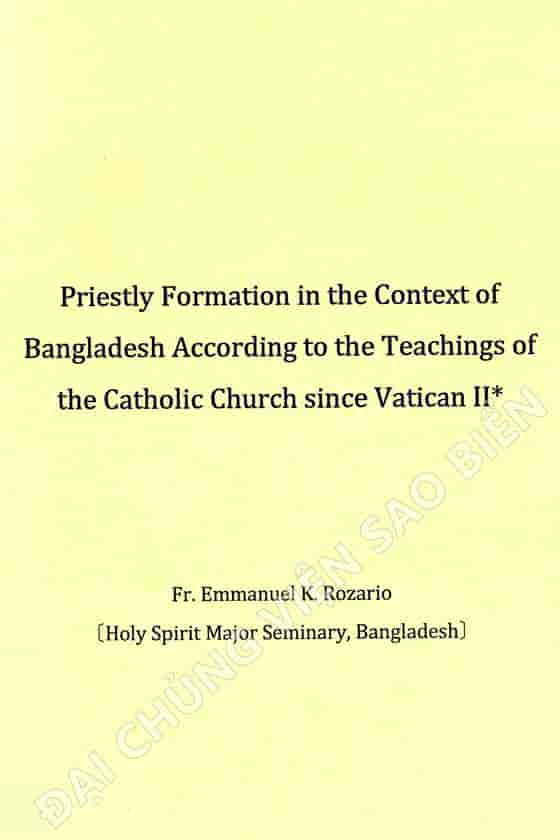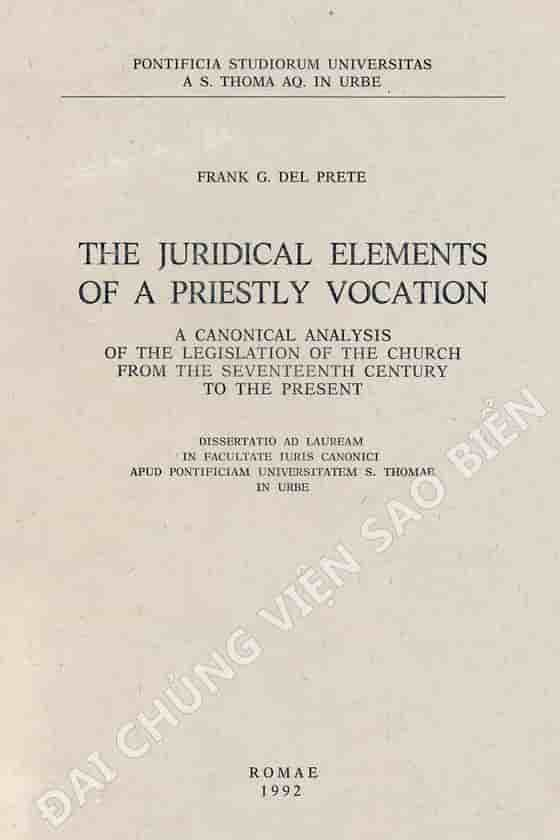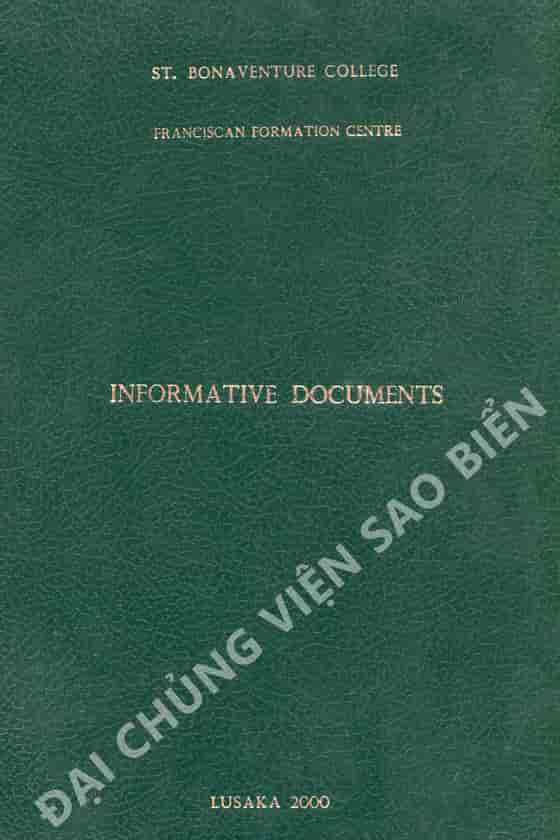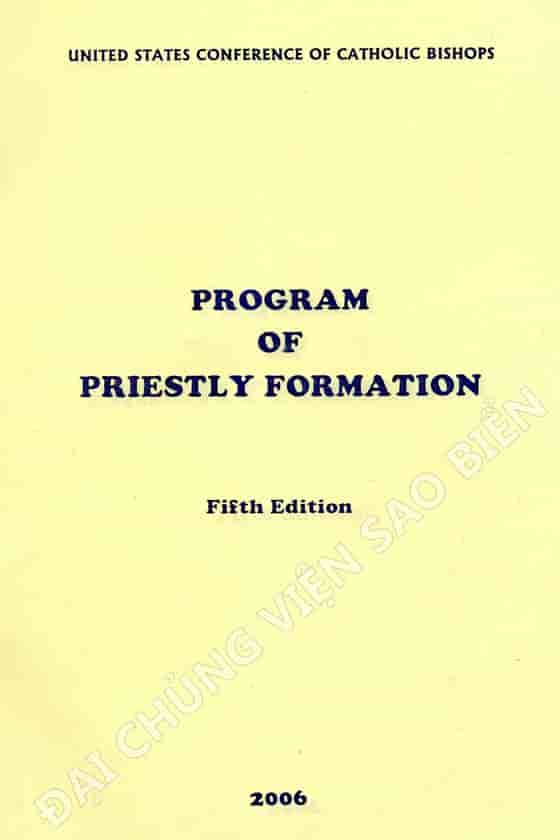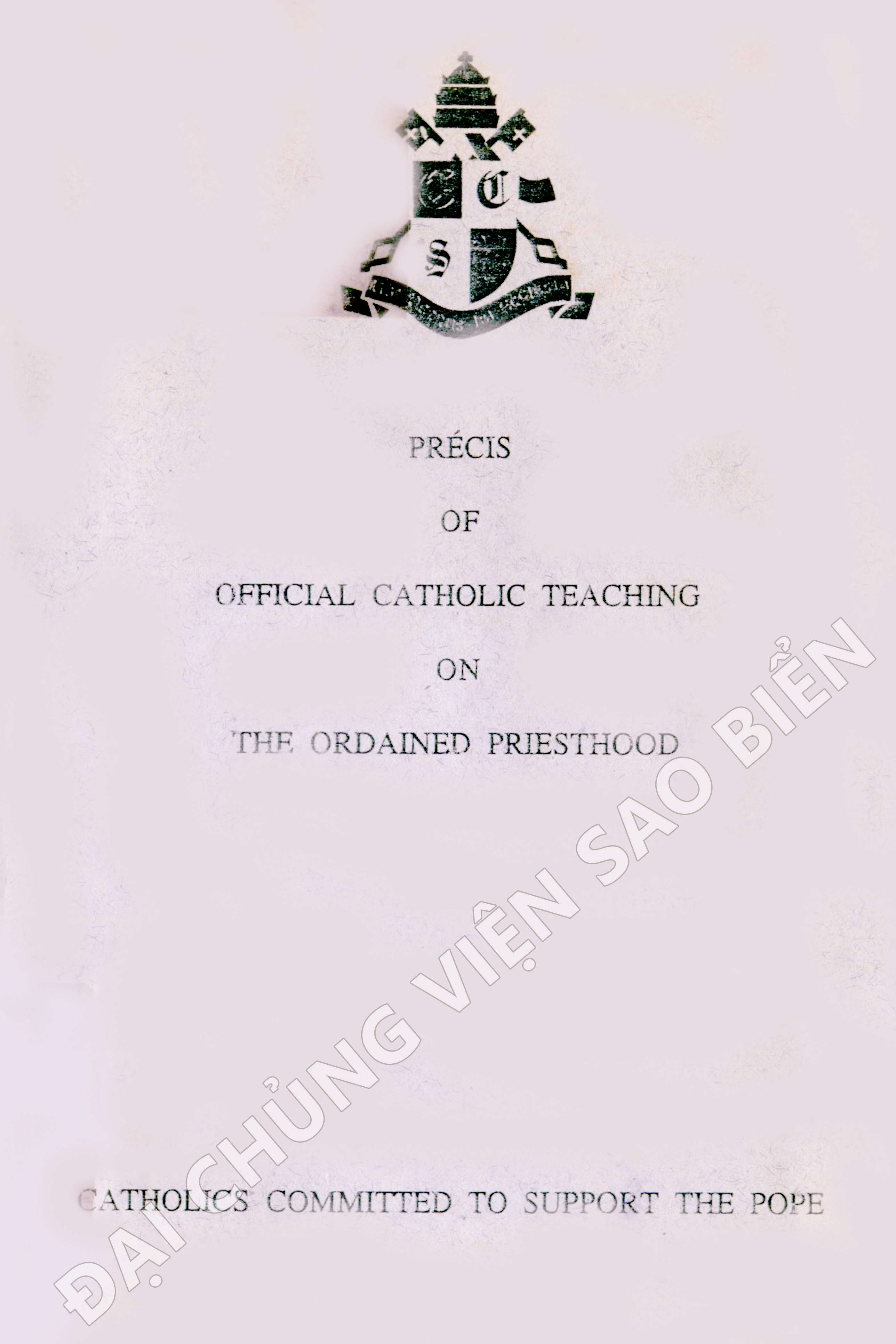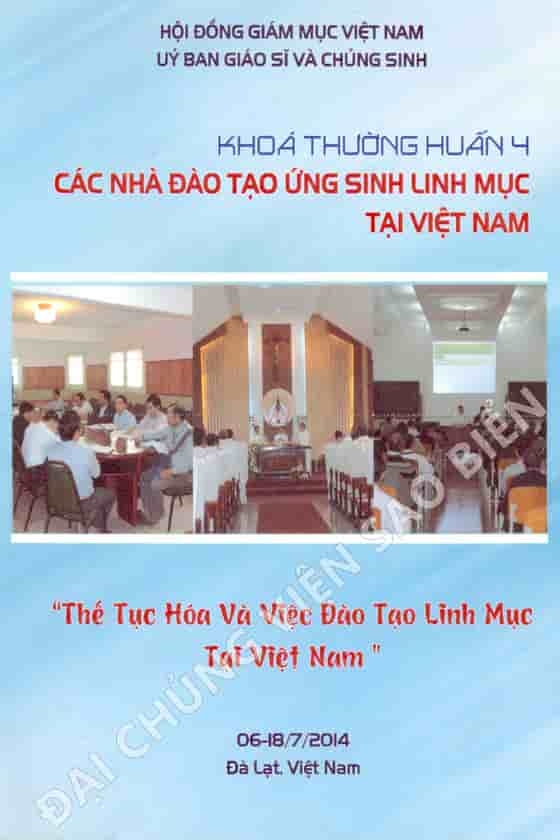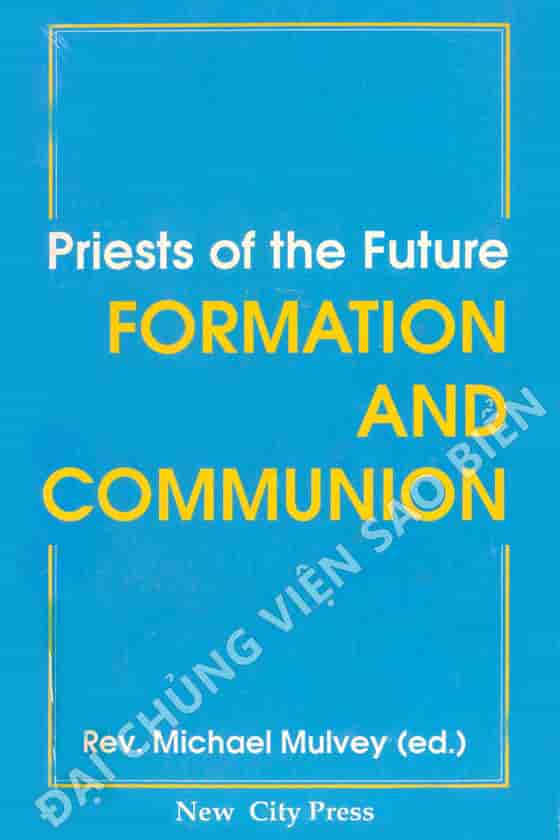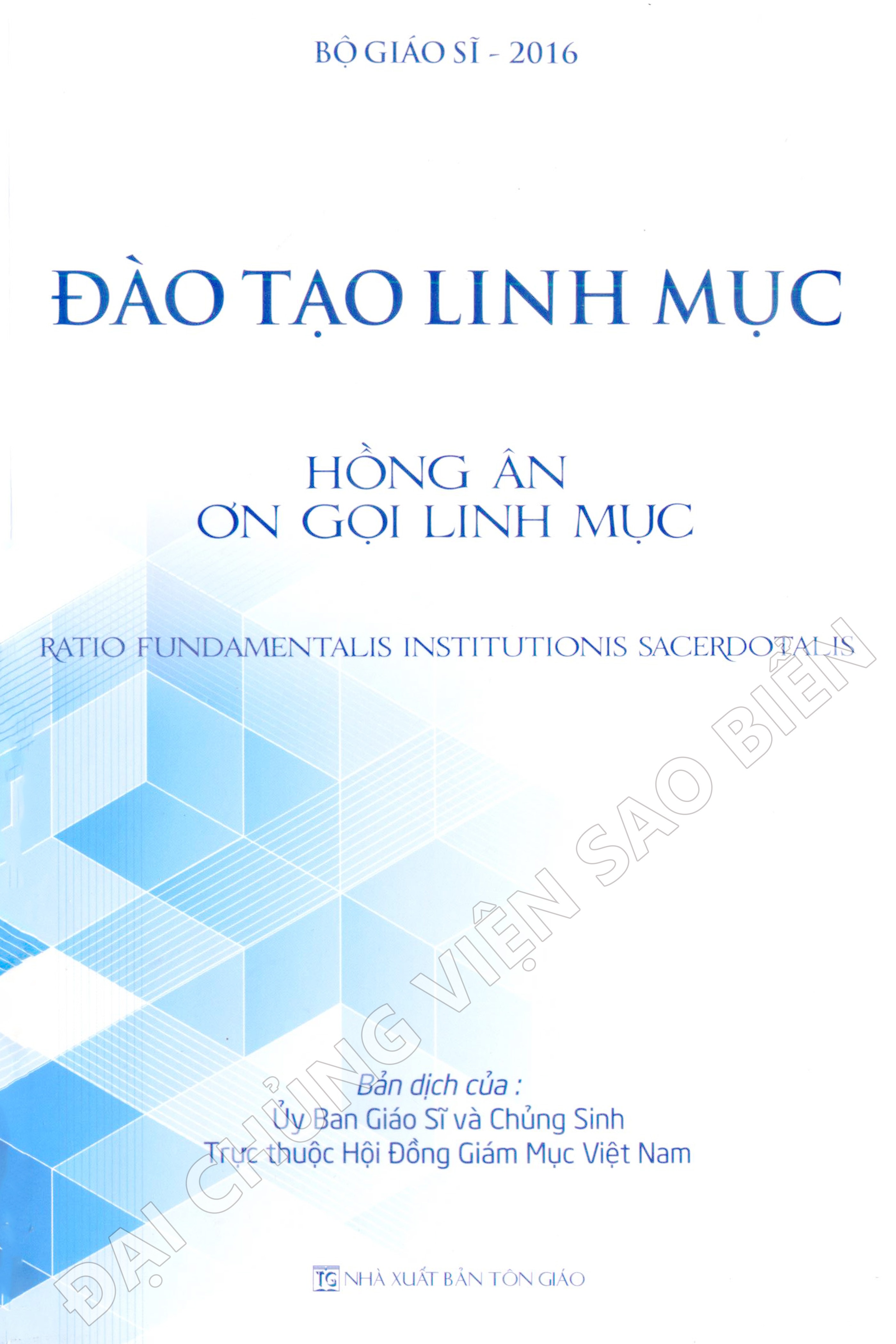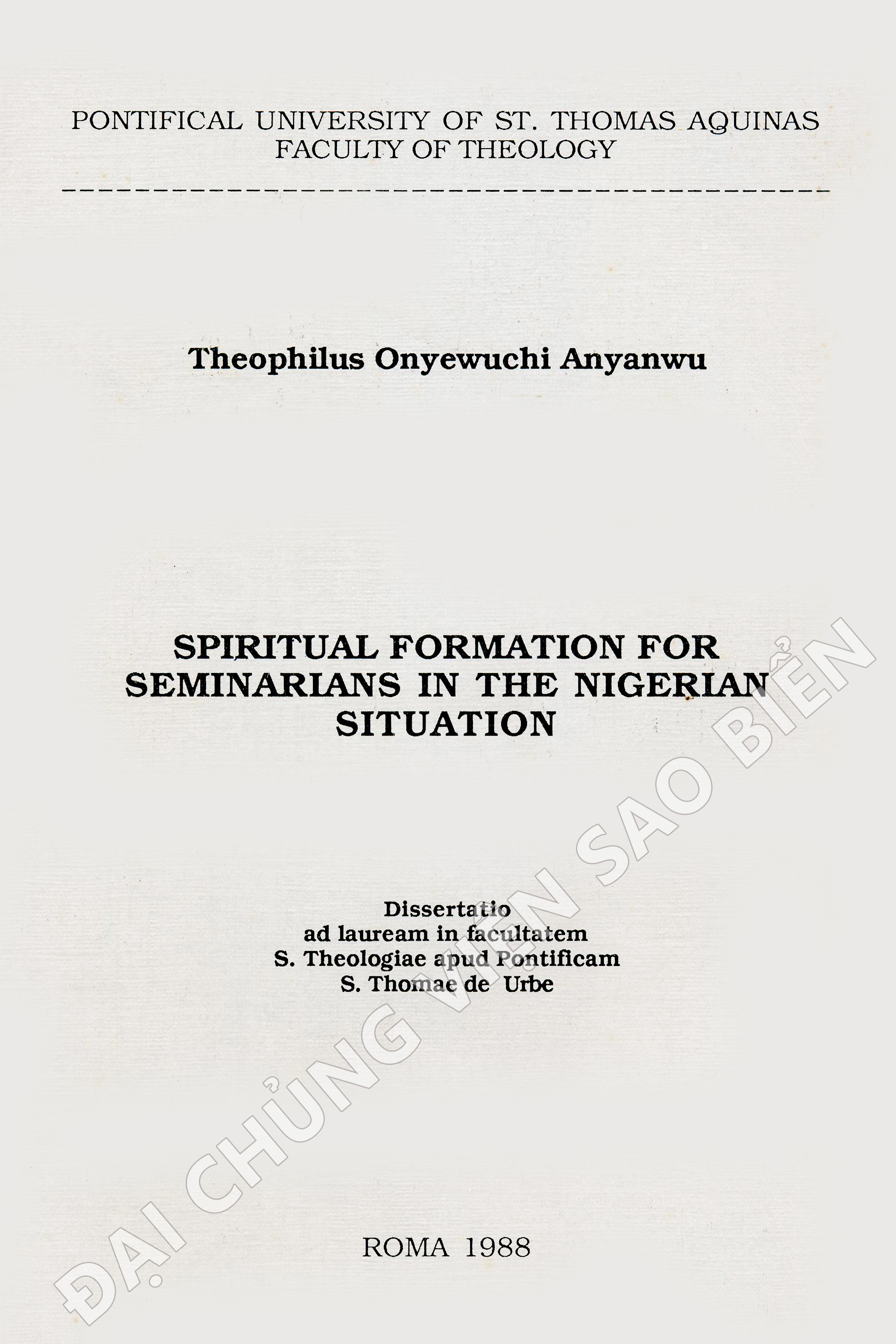| TABLE OF CONTENTS |
|
| Dedication |
III |
| Acknowledgements |
III |
| Table of contents. |
III |
| Foreword |
III |
| Introduction |
III |
| PART ONE: BACKGROUND, CHALLENGES AND OPPORTUNITIES THAT INFLUENCE |
|
| THE SPIRITUAL FORMATION FOR FUTURE PRIESTS IN VIETNAM |
|
| CHAPTER I VIETNAMESE SOCIETY |
|
| A. Historical Context of Vietnam Related to Feudalism Period. |
12 |
| 1. Religious Bases of Misunderstanding and Persecutions. |
12 |
| a. True Meaning of Ancestor Worship |
12 |
| b. Supreme Role of Ông Trời (Heaven) |
13 |
| c. Harmful Misunderstanding. |
14 |
| d. New Way and New Chance |
14 |
| e. Political Reason of Tension, Conflicts and Persecutions |
15 |
| B. Historical Context of Vietnam Related to Communist Period |
16 |
| 1. Relations of Catholic Church and Communist Government |
16 |
| a. Confrontations |
16 |
| b. Understanding and Collaboration |
17 |
| c. Struggles caused by this New Situation. |
18 |
| d. Sign of Hope |
19 |
| 2. Monopoly on Education in Vietnam |
20 |
| 3. New Kind of Religion.... |
20 |
| 4. Restoration of Popular Religions |
21 |
| 5. Reaction with Faithful Hope |
21 |
| C. Some Cultural Factors of Vietnamese People's Mentality |
22 |
| 1. Flexible Words Hide True Feelings. |
22 |
| 2. Distinction between Reluctant Submission and Heartfelt Obedience |
23 |
| 3. Regional Characteristics within Country |
23 |
| 4. Helpful Warning for Spiritual Formation. |
24 |
| CHAPTER II VIETNAMESE LOCAL CHURCH WITH HER SEMINARIES AND CLERGY |
|
| A. Point of View of Vietnamese Church Leaders |
27 |
| B. Only Six Major Seminaries for Vietnamese Catholic Church..... |
28 |
| C. Difficulties in Admission and Formation |
28 |
| 1. Problem of Seminarians' Admission Process |
28 |
| 2. Problem of Formators and Formation Process. |
29 |
| D. Seminary Representatives' Biennial Meetings |
29 |
| 1. Representatives Meetings' Activities |
29 |
| 2. Representatives Meetings' Request to Government. |
30 |
| 3. Representatives Meetings' Request to Church Leaders. |
31 |
| E. Crucial Problem of Shortage of Formators |
31 |
| 1. Reality Urges More Efforts |
31 |
| 2. Present Resolution and Hope in the Future |
32 |
| F. Overview of Vietnamese Seminarians' Situation. |
33 |
| 1. Expectations and Hopes of Seminarians' Family.............. |
33 |
| 2. Non-Resident or Unofficial Seminarians.... |
34 |
| 3. Church Requirements and Difficulties of Candidates...... |
34 |
| 4. Problems of Recruitment and Admission Process. |
35 |
| (a) Limited Number. |
35 |
| (b) Low Quality of Intellectual Level |
36 |
| (c) Problems of Relationship and Celibacy |
36 |
| (d) Social Defect of Cheating and Dishonesty |
37 |
| (e) Subtle Negotiation |
37 |
| (f) Graduate Seminarians for Priesthood |
38 |
| G. Present Situation of Vietnamese Priests |
39 |
| 1. General Observation |
39 |
| 2. Positive Aspects |
39 |
| 3. Negative Aspects. |
40 |
| 4. Formative Vision for Seminarians |
41 |
| CHAPTER III PRESENT SPIRITUAL FORMATION IN VIETNAM'S SEMINARIES |
|
| A. Standard Program of Spiritual Formation |
43 |
| a. Theory |
43 |
| b. Spiritual Practices. |
44 |
| c. Indispensable Support. |
44 |
| B. Self-Examination of Seminarians |
44 |
| C. Application of this Program in Reality |
45 |
| D. Obstacles for Spiritual Development Process. |
46 |
| E. Annual Evaluation |
48 |
| F. Need for Constant Improvement |
50 |
| PART TWO: TEACHINGS OF THE CHURCH CONCERNING SPIRITUAL FORMATION FOR SEMINARIANS |
|
| CHAPTER IV TEACHINGS OF THE UNIVERSAL CHURCH CONCERNING SPIRITUAL FORMATION |
|
| A. Documents of the Second Vatican Council |
54 |
| 1. Priestly Training (Optatam Totius). |
54 |
| 2. Ministry and Life of Priests (Presbyterorum Ordinis) |
55 |
| B. Documents of the Holy See. |
57 |
| 1. I Will Give You Shepherds (Pastores Dabo Vobis) |
57 |
| 2. Ecclesia in Asia |
58 |
| a. Priorities of the Church in Asia |
58 |
| b. Spiritual Formation for Seminarians |
59 |
| 3. Ratio Fundamentalis Institutionis Sacerdotalis (Basic Scheme for Priestly Training) |
60 |
| a. General Guidelines. |
60 |
| b. Specific Aspects |
61 |
| 4. Spiritual Formation in Seminaries |
63 |
| C. Teaching of Pope John Paul II |
65 |
| 1. Contribution of Psychology in the Priestly Formation.... |
65 |
| a. Proper and Limited Contribution of Psychology in Priestly Formation Process |
65 |
| b. Spiritual Formation and Celibacy |
65 |
| 2. Solid Preparation for Priests |
66 |
| 3. Spiritual Formation Adapted to Missionary Challenges |
66 |
| D. Teaching of Pope Benedict XVI |
67 |
| 1. Jesus Christ as True Measure |
67 |
| 2. Church has no Fear of the Future. |
68 |
| 3. Open Wide the Doors for Christ |
68 |
| CHAPTER V TEACHINGS OF THE LOCAL CHURCH CONCERNING SPIRITUAL FORMATION |
|
| A. Concrete Orientations of Federation of Asian Bishops' Conferences |
69 |
| 1. Asian Images of Priest |
69 |
| a. Central Priesthood of Jesus Christ, the Savior. |
69 |
| b. The Priest, an Ecclesial Man |
69 |
| c. Life and Function of Asian Priest's Context |
69 |
| 2. Aspects of the Formation Process. |
69 |
| a. Style and Model of Forming the Candidates. |
69 |
| b. Crucial Quality of the Formators. |
69 |
| c. Need of Effective Way of Evaluation. |
69 |
| 3. Prayer Life in Spiritual Formation for Seminarians |
69 |
| a. Vital Meaning of Prayer.. |
69 |
| b. Interaction of Asian and Christian Forms of Prayer.. |
69 |
| B. Teaching of the Local Church Concerning Spiritual Formation |
69 |
| CHAPTER VI IMPLICATION OF CHURCH TEACHINGS IN SPIRITUAL FORMATION FOR SEMINARIANS |
|
| A. Vision of Priesthood Implied in Spiritual Formation |
78 |
| 1. A Priest, Man Consecrated, Possessed and Guided by the Holy Spirit. |
79 |
| 2. A Priest, Spiritual Man and Man of Prayer |
80 |
| 3. A Priest, Man of the Sacred. |
81 |
| 4. A Priest, Man Having a Solid Biblical Foundation |
82 |
| 5. A Priest, Man Open to Communion |
83 |
| 6. A Priest, Man Committed to Mission |
84 |
| 7. A Priest, Man of Dialogue. |
85 |
| 8. A Priest, Man of Social Communication. |
85 |
| 9. A Priest, Man Sensitive to the Social Changes |
86 |
| 10. A Priest, Man of Prophetic Ministry |
87 |
| B. Spirituality and Theology of the Priesthood. |
88 |
| 1. Spirituality of the Priesthood. |
88 |
| 2. Theology of the Priesthood |
89 |
| C. Image and Identity of the Priest |
90 |
| D. Spiritual Support and Nourishment |
93 |
| PART THREE |
|
| SPIRITUAL FORMATION AND SELF- FORMATION OF FUTURE PRIESTS IN VIETNAM TODAY'S CONTEXT |
| CHAPTER VIICONTEXTUALIZING SPIRITUAL FORMATION |
|
| A. In Perspective of Ecclesiology of Vatican II. |
98 |
| B. In Perspective of Mission |
99 |
| 1. Urgency of Mission of the Church in Asia and Vietnam Today. |
99 |
| 2. Source and Model: Mission of Jesus |
100 |
| a. Mission of Jesus before Easter |
100 |
| b. Mission of Jesus after Easter |
101 |
| C. Church is Missionary by Nature.. |
101 |
| 3. Dialogue, Relevant Way of Living and Doing Mission |
101 |
| 4. Becoming Eager and Effective Missionaries |
102 |
| C. In Perspective of Collaboration with Laity |
102 |
| 1. New Concern, New Vision..... |
102 |
| 2. Collaboration with Lay People in General |
104 |
| 3. Collaboration with Women, Lay and Religious |
105 |
| 4. ICLA Formation Model. |
106 |
| 5. Vision and Recommendation of FABC |
108 |
| D. In Perspective of Dialogue |
108 |
| 1. Attitude and Guideline of Pope Benedict XVI |
108 |
| 2. Dialogue with Cultures |
109 |
| 3. Interreligious Dialogue |
110 |
| 4. Being with the Poor. |
112 |
| 5. Dialogue with Communists. |
113 |
| a. Reasons for Dialogue with Communists |
113 |
| 1) Mission of Jesus and Mission of the Church.... |
113 |
| 2) Requirement of the Gospel |
114 |
| 3) Historical Orientation of Humankind in our Times. |
115 |
| 4) Perceptional and Relational Evolution |
116 |
| b. Criteria of this Dialogue |
117 |
| 1) Recommendations of Pope John Paul II |
117 |
| 2) Attitude of Vietnamese Bishops |
119 |
| 3) Understanding of FABC |
121 |
| c. Relevant Ways of Dialogue with Communists in Vietnam |
121 |
| 1) Recognition of Civil Authorities |
121 |
| 2) Rejection of Dialogue at Ideological Level |
122 |
| 3) Dialogue of Life and Action |
123 |
| 4) Dialogue of Witnessing to God's Love |
124 |
| 5) Some Data of Statistics |
124 |
| d. Way of Hope Already Opened. |
125 |
| CHAPTER VIII SPIRITUAL FORMATION AND SELF-FORMATION OF VIETNAMESE FUTURE PRIESTS |
|
| A. Pre-Seminary Period: Vocation Promotion, Dal Screening and Admission. |
127 |
| 1. Effective Collaboration at Diocesan Level |
127 |
| a. Period of Preparation for the Seminary. |
127 |
| b. Initial Commitment of Candidate. |
128 |
| c. Personal Data of Candidate |
128 |
| d. Indispensable Engagement of Diocesan Bishop... |
129 |
| 2. Assessment and Screening for Admission.... |
130 |
| a. Family Background. |
130 |
| b. Physical and Mental Health |
131 |
| c. Moral and Spiritual Health |
132 |
| d. Spiritual Direction and Counseling.. |
132 |
| 3. Discernment of Vocation. |
133 |
| a. Two Cognitive Elements of Discernment of Vocation |
133 |
| 1) Structures of the Person's Right Intention......... |
134 |
| 2) Motivational Orientations |
134 |
| b. Commitment to Self-Transformation and Mission. |
134 |
| B. Seminary Period: Formation and Self-Formation |
135 |
| 1. General Plan of Seminary Formation Process |
135 |
| 2. Spiritual Formation |
136 |
| a. Standard of Spiritual Formation |
136 |
| b. Spiritual Direction |
137 |
| 1) Definition |
137 |
| 2) General Principles. |
137 |
| 3) Three Basic and Decisive Issues |
138 |
| 4) Assessment of Inner Motive |
140 |
| c. Prayer Life and Interior Life |
141 |
| 1) Basic Orientations for Deep Spirituality |
141 |
| 2) Three Characteristics of Prayer. |
142 |
| 3) Pedagogical Means for Prayer Formation |
145 |
| 4) Silence: Conditions of Interior Life. |
146 |
| 5) Forms of Prayer: Word of God, Symbol and Ritual |
150 |
| 6) Asian and Vietnamese Manner of Praying...... |
154 |
| 7) Towards Becoming a Leader in Prayer. |
158 |
| 3. Structures of Spiritual Formation |
160 |
| a. Formation and Internal/External Forum |
160 |
| 1) Definition of Terms |
160 |
| 2) Procedures and Interactions of Two Fora..... |
161 |
| b. Agents of Formation |
164 |
| 1) Formative Community |
164 |
| 2) Candidate himself. |
165 |
| 3) Formators |
166 |
| 4) Spiritual Director |
169 |
| 5) Rector and Seminary Council. |
171 |
| 6) Small Groups of Peers.. |
172 |
| 7) Milieu of Pastoral Insertion. |
174 |
| c. Evaluation and Presentation to Ordination |
175 |
| 1) Annual Evaluation Process of Seminary Council |
176 |
| 2) Annual Self-Evaluation of Seminarian |
177 |
| 3) Final Evaluation and Presentation to Ordination |
178 |
| 4) Unsuitable Candidates for the Priesthood. |
179 |
| C. Post-Seminary First Five Years of Priesthood: Furthering Harmonious, Balanced and Mature Relationships in the Life and Ministry of Priests |
180 |
| 1. Faced to Unexpected Realities and Radical Needs. |
181 |
| a. Unexpected Realities. |
181 |
| b. Radical and Permanent Needs of the Church. |
182 |
| c. Responsibility and Contribution of Seminary |
184 |
| 2. Relational Problems and Support |
186 |
| a. Relationship with self. |
186 |
| b. Relationship with Others. |
187 |
| 1) Relationship with Ordinary Bishop.. |
187 |
| 2) Relationship with Fellow Priests |
187 |
| 3) Relationships with Lay Men and Women |
188 |
| 4) Relationships with Women: Support or Probler in Life and Ministry of Priest? |
189 |
| 5) Relationships with Women: Be Wise and Awaken in Relationship with Religious Women |
190 |
| 6) Seeking the Good Ways of Relationships |
192 |
| c. Relationship with Nature (Ecological Dimension). |
194 |
| 3. Relationship with God and Support |
195 |
| a. Jesus of Nazareth, Way towards Abba |
195 |
| b. Eucharist, Jesus Meal Presence |
196 |
| c. Mother of Jesus, Mother of Priest |
196 |
| CONCLUSION |
199 |
| I. Findings |
203 |
| TTI A. Background, Challenges and Opportunities of Spiritual Formation in |
203 |
| Vietnam |
203 |
| 1. Historical Context Related to Feudalism Period. |
203 |
| 2. Historical Context Related to Communist Period... |
203 |
| B. Concerning the Teachings of the Church |
204 |
| 1. Highlights of the Universal Church |
204 |
| 2. Concrete Orientations and Directives of the Local Church. |
204 |
| 3.. Implications of the Church Teachings |
204 |
| C. Contextualizing Spiritual Formation. |
205 |
| D. Particular Elements Helping Seminarians to Become Effective Ministers. |
205 |
| 1. Pre-Seminary Spiritual Formation |
205 |
| 2. Seminary Spiritual Formation and Self-Formation. |
205 |
| a. Spiritual Formation. |
205 |
| b. Prayer Life and Interior Life |
206 |
| c. Structure of Spiritual Formation |
206 |
| d. Evaluations and Presentation to Ordination... |
206 |
| 3. Post-Seminary First Five Years of Priesthood |
207 |
| II. Practical Recommendations. |
207 |
| A. Concerning Background and Challenges |
207 |
| B. Concerning the Teachings of the Church |
208 |
| C. Contextualizing Spiritual Formation. |
208 |
| D. Particular Elements Helping Seminarians To Become Effective Ministers |
209 |
| BIBLIOGRAPHY |
210 |
| APPENDIX. |
222 |
| A Self-Formation of Seminarians |
222 |
| 1. Questionnaire of Self-Examinations. |
222 |
| 2. Awaken Questionnaire |
227 |
| 3. Self-Evaluation |
229 |
| B. Candidate Learns To Become a Good Spiritual Director |
234 |
| 1. Spiritual Direction and Discernment |
234 |
| 2. What is Spiritual Discernment? |
235 |
| 3. What is Spiritual Direction? |
235 |
| a. Importance of Spiritual Discernment and Spiritual Direction |
236 |
| b. Three Relationships in Spiritual Direction |
237 |
| 4. Principles of Spiritual Direction |
239 |
| 5. Content and Process of Spiritual Direction Sessions |
240 |
| 6. Qualities of a Good Spiritual Director |
241 |
| 7. What the Spiritual Director has to avoid? |
243 |
| 8. What the Spiritual Director has to do? |
244 |
| C. Psychology and Celibacy Formation for Seminarians. |
244 |
| 1. Harmful Consequences of Sexual Abuse. |
244 |
| 2. Psychological Examination |
245 |
| a. Meaning and Limitations. |
245 |
| b. Procedure |
246 |
| c. Role of Psychology in the Selection and Training of the Seminarians |
247 |
| 3. Problem Related to the Celibacy. |
249 |
